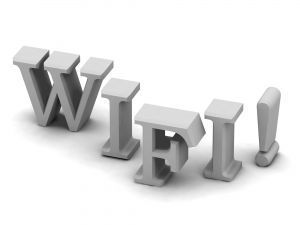Wireless Internet access, whether you’re using it on your computer, cell phone or other devices is rapidly becoming the standard way for people to access the Internet, even though most people have absolutely no idea how their data can pass through the air somehow to get to the Internet and back. This article will explain how it works in very basic easy to understand terms.
First of all, all Internet traffic moves using set standards, all of which are versions of a protocol called 802.1x, don’t worry about the “x” it changes depending on the version in use, sort of like versions of software. At any rate, what 802.1x means is that information that is sent between computers is sent in a special format that both sides can understand. In reality, it is nothing more than a stream of 1s and 0s. The protocol is like a code where the machines on both side know how to interpret the 1s and 0s in a way that makes sense, or maybe a better example is Morse Code where you only have two types of signal data.
Anyway, data on the Internet is sent in groups of 1s and Os called packets, each of which also have header and footer bits of information that tell each packet where it’s supposed to go (using your IP address and the destination IP address) sort of like a zip code. Packets are usually eight bits long not counting the header and footer information, so, the machines on both sides know exactly how to read them.
To get from one computer to another on a network that uses wires, a packet is created with a header and footer by your computer software and network card, and it is then sent along a wire by means of a modem, the piece of equipment that creates (using pulses of electricity) the 0s and 1s that represent the information being sent. That packet then flows to a router that reads the header information (which contains a delivery IP and address) and then forwards it to the next router and the next, until it is finally sent to the modem on the other end which reads the whole packet and translates it into something the computer on the other side can understand.
With wireless technology, radio waves are used instead of cables to move data, so the 1s and 0s are translated using the same 802.1x protocol but are converted into radio signals rather than electronic wire signals by your modem, which is then picked up by your wireless router, which sends the signal to your modem, which converts the signal to electronic 1s and 0s and then puts those signals on your Internet access cable which in most cases is the same cable that brings you your television or telephone signal. From there, everything works as a regular wired Internet network.
When your computer gets information back, on the other hand, such as one packet containing one character of one e-mail for you, it does the whole thing in reverse.
